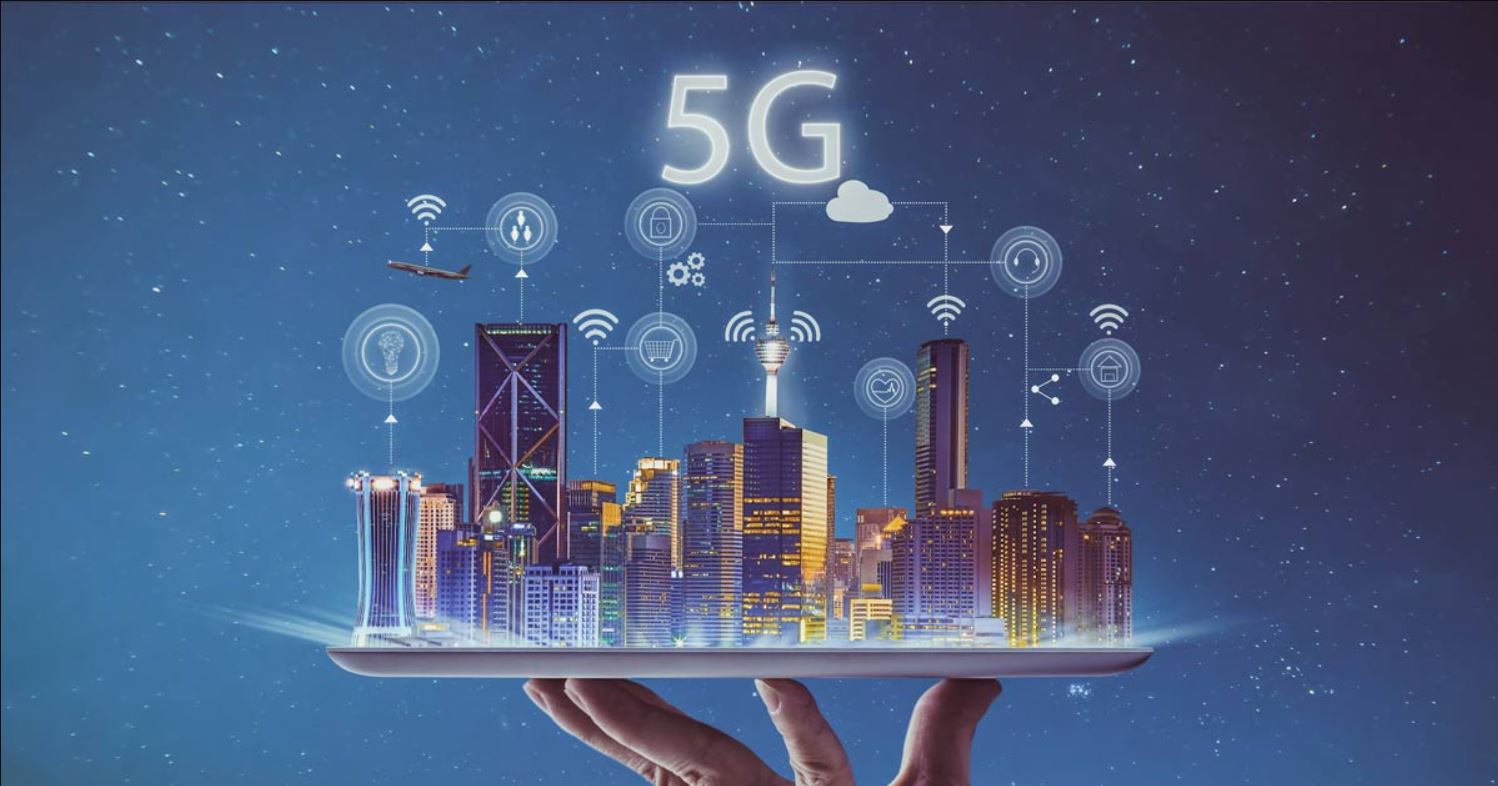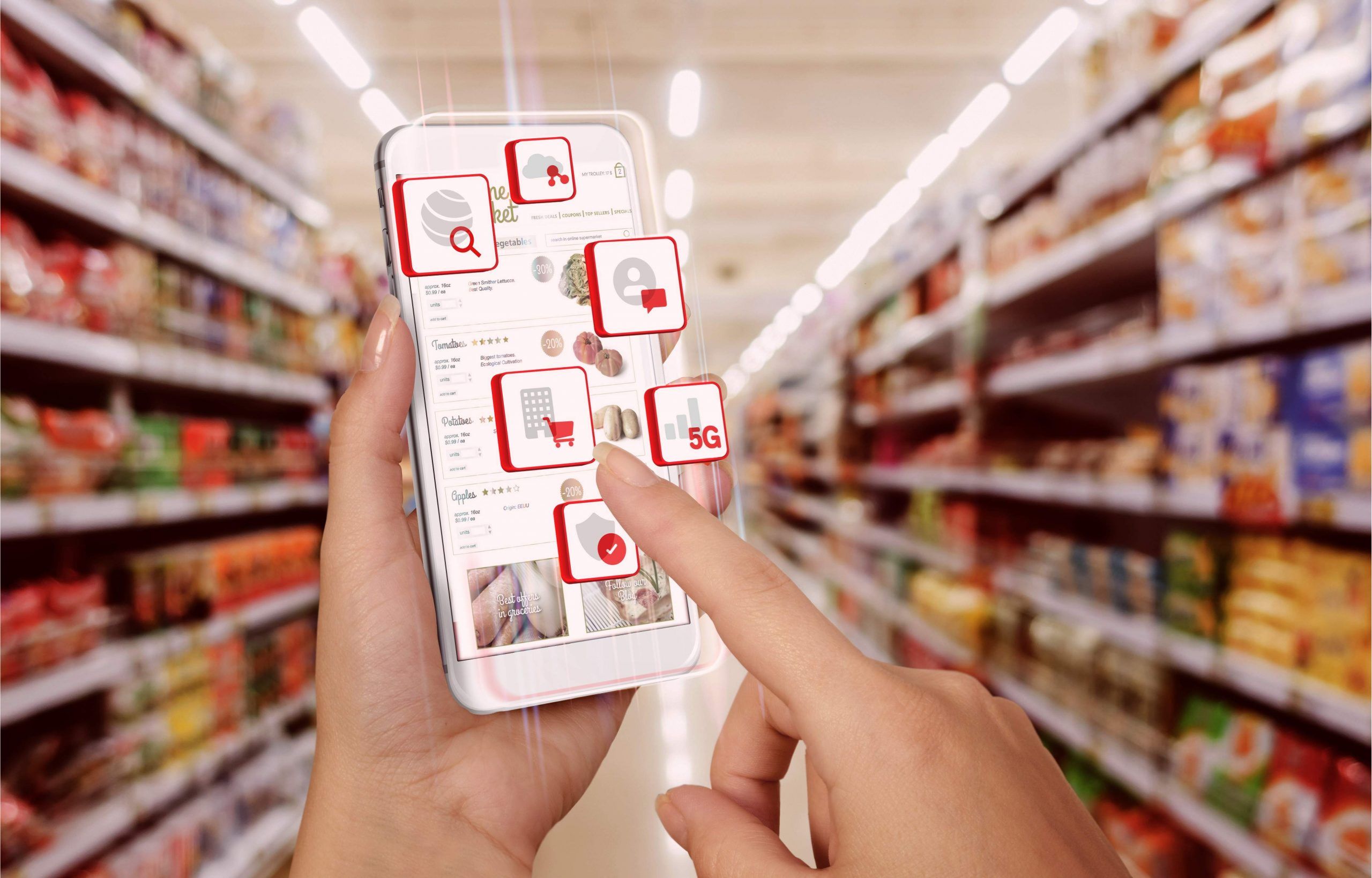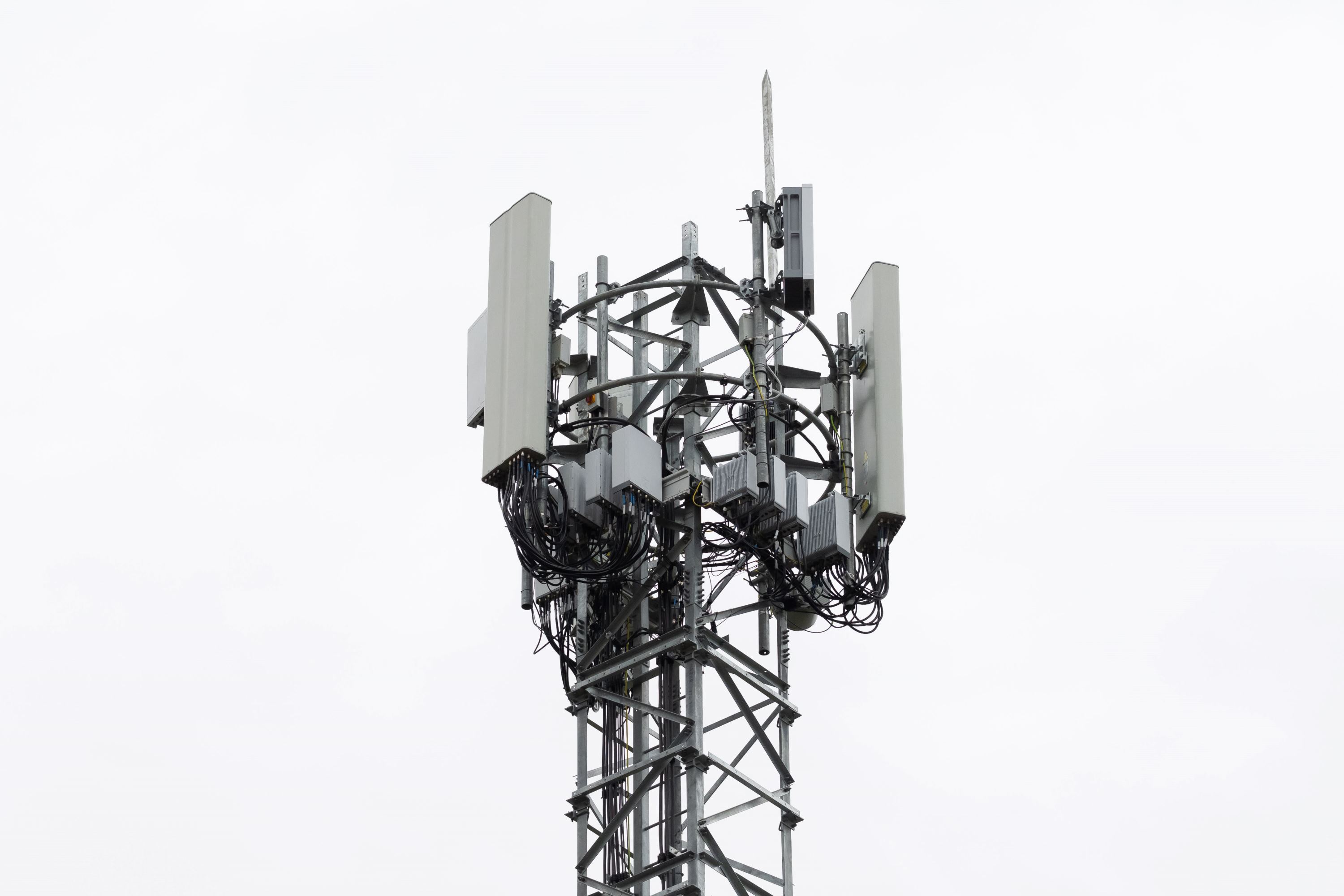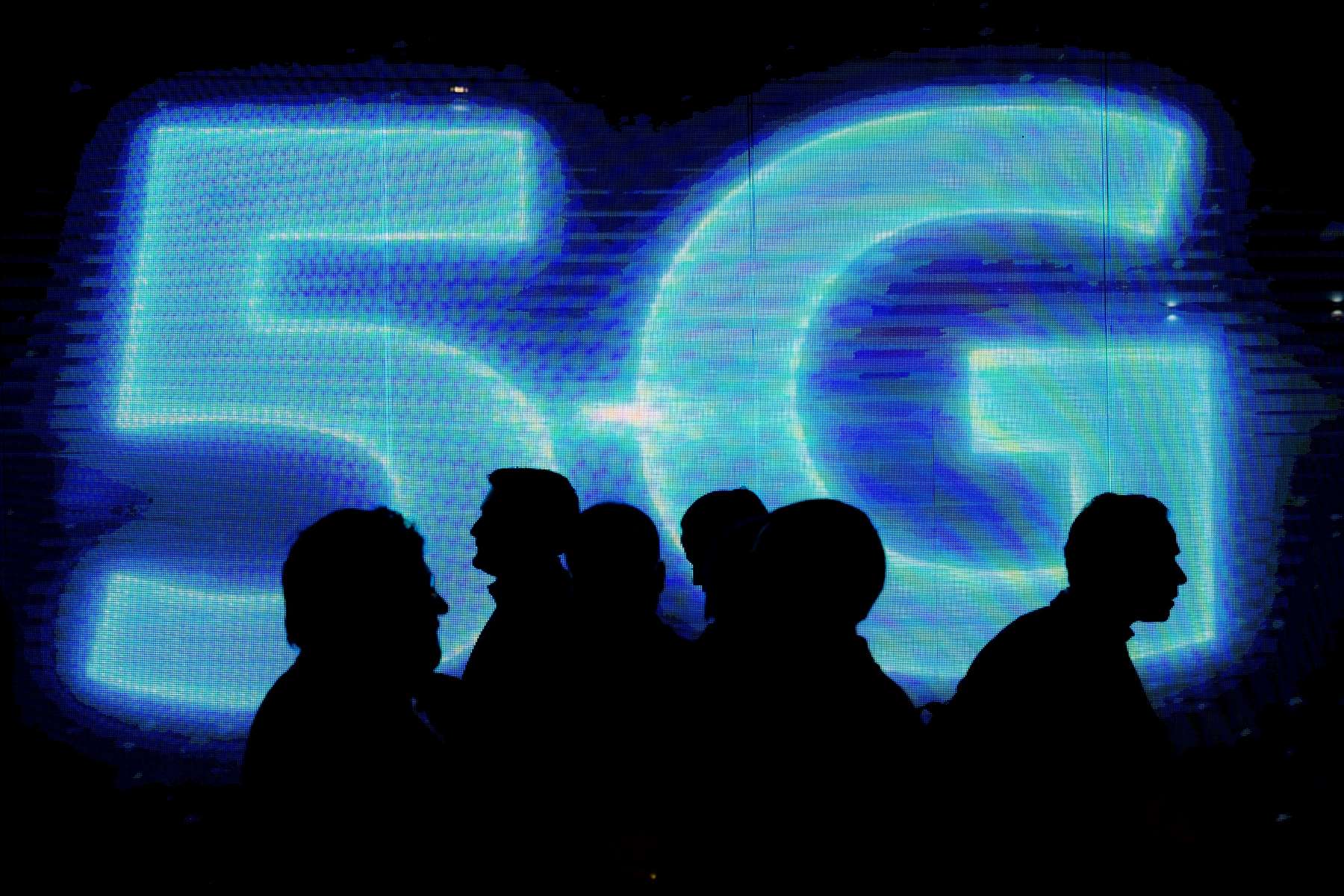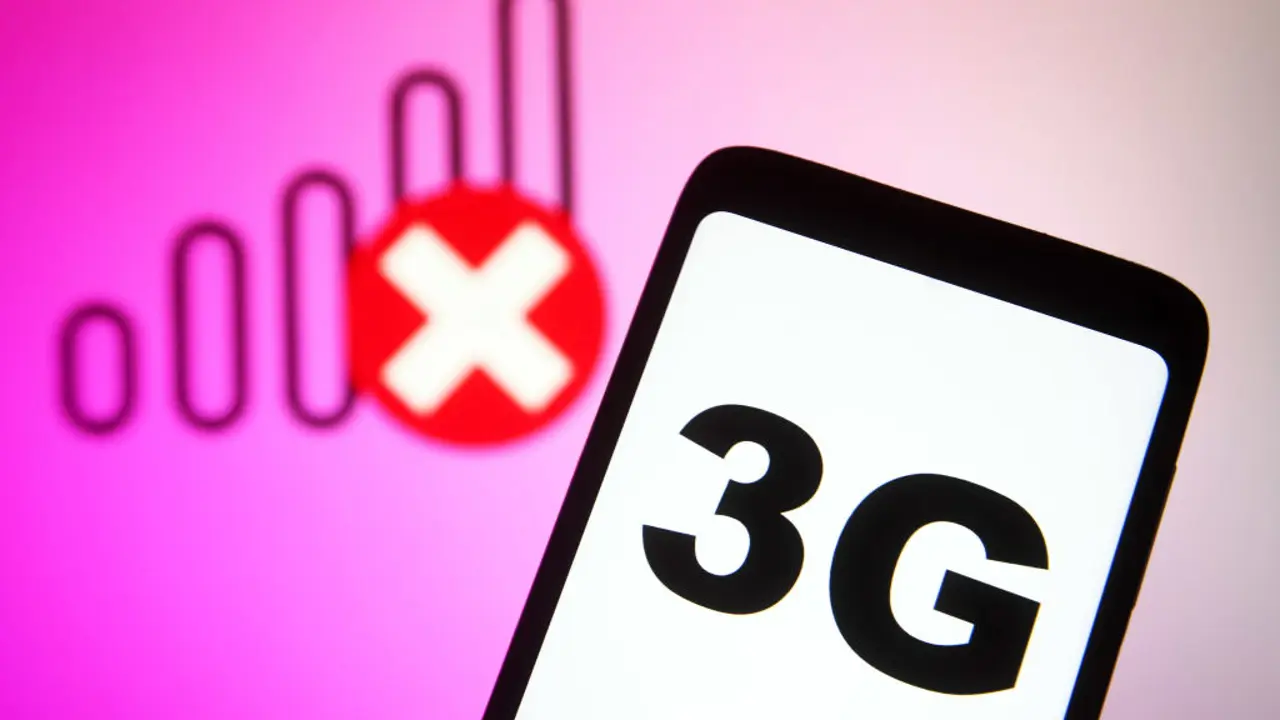Introduction
The world of technology is constantly evolving, bringing new advancements and innovations that shape the way we live and work. One of the most significant developments in recent years is the Internet of Things (IoT), a network of interconnected devices that seamlessly exchange data to enhance our daily lives. From smart homes and wearable devices to industrial applications, IoT has revolutionized various industries.
However, the full potential of IoT has been hindered by the limitations of existing communication networks. Enter 5G, the fifth generation of wireless technology, which promises to overcome these barriers and take IoT to new heights. With its faster speeds, lower latency, increased capacity, and improved energy efficiency, 5G is set to transform how IoT devices operate and interact with each other.
In this article, we will explore the synergistic relationship between 5G and IoT, and how this combination is poised to revolutionize the way we connect and communicate. We will delve into the benefits that 5G brings to the world of IoT, and how it unlocks the true potential of this rapidly expanding network of smart devices. So, let’s dive in and discover how 5G makes IoT better.
What is IoT?
The Internet of Things (IoT) refers to the ever-growing network of physical objects, or “things,” that are embedded with sensors, software, and connectivity, allowing them to collect and exchange data. These objects can range from everyday devices like smartphones and smart thermostats to complex machinery and infrastructure.
At its core, IoT enables these devices to communicate with each other and with humans, creating a seamless and intelligent network of interconnected systems. This integration of physical and digital worlds opens up a myriad of possibilities, enabling automation, data-driven decision-making, and improved efficiency in various domains, including healthcare, transportation, manufacturing, and more.
IoT devices collect data through embedded sensors or external sources and transmit it to a central platform for processing and analysis. This data can range from environmental conditions, user behavior, performance metrics, and much more. Through advanced analytics and machine learning algorithms, actionable insights can be derived, enabling businesses and individuals to make informed decisions and take necessary actions.
One of the key benefits of IoT lies in its ability to enhance convenience and improve the quality of life. Imagine a smart home where lights, thermostats, and appliances can be controlled remotely through a smartphone or voice command. Or consider how IoT-enabled healthcare devices can monitor patients’ vital signs in real-time, providing early alerts and personalized care.
However, IoT goes beyond individual devices or applications. It encompasses the vision of a connected world, where devices, systems, and even cities are interconnected, leading to intelligent and data-driven solutions. These solutions have the potential to transform industries, optimize processes, and create more sustainable, efficient, and secure environments.
In the next sections, we will explore how 5G, the next generation of wireless technology, is set to revolutionize the way IoT operates and opens up new possibilities for a more connected and advanced world.
What is 5G?
5G, short for the fifth generation, is the latest and most advanced wireless technology that aims to revolutionize the way we communicate and connect. Building upon its predecessors, 5G promises faster speeds, lower latency, increased capacity, and improved reliability, enabling a wide array of transformative applications and services.
One of the key features of 5G is its remarkable speed capabilities. With download speeds reaching up to 10 gigabits per second, 5G is significantly faster than its predecessor, 4G. This means that users can download files, stream videos, and access applications at lightning-fast speeds, providing a seamless and immersive user experience.
In addition to its impressive speed, 5G boasts significantly lower latency than previous generations. Latency refers to the delay in data transmission between devices. With 5G, the latency is expected to be as low as one millisecond, which is imperceptible to human users. This near-instantaneous responsiveness is critical for applications that require real-time interactions, such as autonomous vehicles, remote surgeries, and virtual reality experiences.
Another key benefit of 5G is its increased capacity and bandwidth. As the number of connected devices continues to grow, 5G has been designed to accommodate the massive influx of IoT devices, ensuring that the network remains stable and reliable even in densely populated areas. This increased capacity means that more devices can simultaneously connect to the network without sacrificing performance or speed.
Furthermore, 5G brings improvements in energy efficiency, which is crucial for the widespread adoption of IoT devices. The technology enables devices to switch into sleep mode when not in use, conserving power and extending battery life. This is especially beneficial for IoT applications in remote areas or where power sources are limited, as it reduces the need for frequent battery replacements or recharging.
Lastly, 5G offers enhanced security measures to protect the vast ecosystem of connected devices. Its advanced encryption algorithms and authentication methods ensure that data transmitted over the network remains secure and protected from unauthorized access or malicious attacks. This is vital in an age where cyber threats are becoming increasingly sophisticated and pervasive.
In summary, 5G is an innovative wireless technology that promises faster speeds, lower latency, increased capacity, improved energy efficiency, and enhanced security. The deployment of 5G networks globally will pave the way for a new era of connectivity, enabling the seamless integration of IoT devices and unlocking a world of possibilities for businesses, industries, and individuals.
The Benefits of 5G for IoT
The marriage of 5G and IoT holds immense potential, unlocking a plethora of benefits and opportunities for businesses, industries, and individuals alike. Let’s explore some of the advantages that 5G brings to the world of IoT.
Faster and More Reliable Connectivity: With its lightning-fast speeds, 5G enables IoT devices to transmit and receive data at unprecedented rates. This means faster communication between devices, reducing delays and improving overall efficiency. Whether it’s real-time monitoring of industrial machinery or seamless video streaming on smart devices, 5G’s quicker connectivity ensures a seamless and lag-free experience.
Lower Latency: The ultra-low latency of 5G is a game-changer for IoT applications that require real-time interactivity. From autonomous vehicles and remote surgeries to augmented reality experiences, the near-instantaneous responsiveness of 5G reduces delays, enhances precision, and opens up new possibilities for highly immersive and interactive applications.
Increased Capacity and Bandwidth: 5G addresses the challenge of connectivity in densely populated areas where large numbers of IoT devices are expected to coexist. With its increased capacity and bandwidth, 5G networks can support a massive number of devices simultaneously, enabling smooth and efficient data transmission without congestion or network bottlenecks.
Improved Energy Efficiency: IoT devices are often powered by batteries, making energy efficiency a critical consideration. 5G’s energy-saving features, such as allowing devices to enter sleep mode when not in use, prolong battery life and reduce the need for frequent recharging or battery replacements. This is particularly beneficial for IoT applications in remote areas or those deployed in challenging environments with limited power sources.
Enhanced Security: The interconnected nature of IoT devices brings forth concerns regarding security and privacy. 5G brings advanced security measures such as encryption and authentication protocols to safeguard the vast network of devices. With robust security features, 5G ensures that data transmitted between IoT devices and the cloud remains protected from unauthorized access or cyber threats.
The benefits of 5G for IoT extend beyond these specific areas. From enabling smart cities with efficient utilities and transportation systems to transforming healthcare with remote patient monitoring and personalized treatments, 5G offers a wealth of opportunities for innovation and progress.
In the following sections, we will delve deeper into each of these benefits and explore how 5G revolutionizes the IoT landscape, creating a more connected, efficient, and secure future.
Faster and More Reliable Connectivity
One of the key advantages that 5G brings to the world of IoT is faster and more reliable connectivity. With its lightning-fast speeds, 5G enables IoT devices to transmit and receive data at unprecedented rates, revolutionizing the way devices communicate and operate.
Gone are the days of waiting for downloads or buffering videos. With 5G, IoT devices can seamlessly exchange data in real-time, creating a smooth and uninterrupted experience for users. This is particularly beneficial in applications where even the slightest delay can have significant consequences, such as autonomous vehicles or remote surgeries.
5G’s faster connectivity also enhances the efficiency of IoT devices. In industrial settings, where machines and equipment need to communicate and synchronize in real-time, the speed of 5G ensures that processes can operate at maximum efficiency. With near-instantaneous communication, IoT devices can work in sync, leading to improved productivity, reduced downtime, and optimized operations.
Moreover, 5G’s faster speeds enable data-intensive IoT applications to thrive. From video surveillance systems to cloud-based analytics, these applications require quick and reliable data transfer. 5G’s high-speed connectivity can handle large volumes of data seamlessly, supporting real-time video streaming, high-resolution imaging, and rapid data analysis for predictive maintenance or real-time decision-making.
But it’s not just about speed—5G also brings enhanced reliability to IoT connectivity. Communication between IoT devices is critical, especially in mission-critical applications such as smart grids or healthcare monitoring. With its robust network infrastructure and advanced technology, 5G ensures that devices stay connected even in challenging environments or areas with high network congestion.
5G achieves this reliability through advanced features such as beamforming and network slicing. Beamforming focuses the network’s signal directly towards the IoT device, amplifying the strength and improving the connection quality. Network slicing, on the other hand, allows the network to be dynamically allocated to different IoT applications based on their specific requirements, ensuring the necessary resources are available for reliable connectivity.
Overall, faster and more reliable connectivity offered by 5G unleashes the true potential of IoT. From smart cities and industrial automation to healthcare and agriculture, 5G’s high-speed and dependable connectivity create a foundation for transformative IoT applications that drive efficiency, innovation, and progress in various industries.
Lower Latency
One of the significant benefits that 5G brings to the world of IoT is lower latency. Latency refers to the time delay in data transmission between devices, and 5G has been engineered to deliver near-instantaneous responsiveness, opening up new possibilities for real-time applications and immersive experiences.
With 5G’s ultra-low latency, IoT applications can achieve unprecedented levels of precision and interactivity. For example, in the realm of autonomous vehicles, the split-second decisions made by self-driving cars rely on real-time data exchange with sensors, infrastructure, and other vehicles. The low latency of 5G ensures that the communication between these devices is seamless and instantaneous, leading to enhanced safety, efficiency, and accuracy on the roads.
Lower latency is also crucial in healthcare applications where real-time monitoring and telemedicine play a vital role. In remote patient monitoring, for instance, IoT devices continuously collect and transmit data, such as heart rate or glucose levels, to healthcare professionals. With 5G’s low latency, this data can be quickly transmitted and analyzed, allowing doctors to make timely decisions and provide remote care with minimal delay.
Another area that benefits from 5G’s low latency is augmented and virtual reality (AR/VR). These immersive technologies rely on real-time rendering and interaction, making low latency indispensable for a seamless user experience. With 5G, users can experience ultra-responsive AR/VR applications, whether it’s in gaming, training simulations, or virtual tours.
5G achieves such low latency by minimizing the time it takes for data to travel between IoT devices and the cloud. The speed of light is constant, but by strategically placing edge computing resources closer to the devices, 5G reduces the distance and the time it takes for data to be processed, lowering the overall latency significantly.
Besides, 5G’s network architecture and advanced communication protocols optimize the routing and processing of data, further reducing latency. These advancements, coupled with the high data transfer speeds of 5G, contribute to a virtually delay-free communication, enhancing the efficiency and effectiveness of various IoT applications.
In summary, the lower latency offered by 5G revolutionizes the IoT landscape, enabling real-time interactions, precise decision-making, and immersive experiences. From autonomous vehicles to remote healthcare and AR/VR applications, 5G’s ultra-low latency levels the playing field for IoT devices, delivering seamless responsiveness and unlocking new possibilities for innovation and progress.
Increased Capacity and Bandwidth
One of the key benefits that 5G brings to the world of IoT is increased capacity and bandwidth. As the number of connected devices continues to grow exponentially, the demand for network resources and bandwidth also rises. 5G addresses this challenge by providing a network infrastructure capable of handling a massive number of IoT devices simultaneously.
With its increased capacity, 5G ensures that IoT applications can operate smoothly even in highly congested areas or dense deployments. This is particularly crucial for scenarios where multiple devices need to communicate simultaneously, such as in smart cities, industrial IoT, or large-scale sensor networks.
Furthermore, 5G offers significantly higher bandwidth than previous generations of wireless technology. This means that more data can be transferred over the network at a faster rate, enabling IoT devices to collect, transmit, and process larger volumes of data in real-time. From high-resolution video surveillance to complex data analytics, 5G’s increased bandwidth empowers IoT applications with the ability to handle data-intensive tasks seamlessly.
IoT devices rely on a seamless flow of data between the edge computing devices and the cloud. With 5G’s increased capacity and throughput, the transmission of data becomes smoother and more efficient. This allows for faster response times and enables IoT devices to operate in real-time, enhancing their overall performance.
Another advantage of increased capacity and bandwidth is the reduced risk of network congestion. In traditional networks, when too many devices connect simultaneously, it can lead to a slowdown in data transfer speeds and unstable connections. With 5G’s enhanced capacity, a larger number of devices can connect to the network without compromising performance, ensuring a smooth and uninterrupted experience for IoT devices and their users.
5G achieves increased capacity and bandwidth by utilizing advanced technology such as higher frequency bands and more efficient spectrum allocation. By utilizing a wider range of frequencies, 5G networks can accommodate more devices and transmit data at higher rates. Additionally, advanced antenna designs and beamforming techniques allow 5G networks to optimize signal transmission and strengthen connectivity, further boosting capacity and bandwidth.
In summary, increased capacity and bandwidth offered by 5G unleash the full potential of IoT. From smart cities and industrial applications to healthcare and agriculture, 5G’s ability to handle massive device deployments and transmit large volumes of data in real-time paves the way for innovative and transformative IoT applications that drive efficiency, productivity, and innovation in various industries.
Improved Energy Efficiency
One of the significant benefits that 5G brings to the world of IoT is improved energy efficiency. As the number of IoT devices continues to grow, optimizing power consumption becomes crucial for the widespread adoption and sustainability of these devices.
With the deployment of 5G, energy efficiency is prioritized through various technological advancements and network optimizations. This improved energy efficiency has a positive impact on the battery life and overall power consumption of IoT devices.
One way that 5G achieves improved energy efficiency is through the implementation of power-saving features. IoT devices often operate on battery power, and 5G’s power-saving mechanisms allow these devices to conserve energy when not actively transmitting or receiving data. By intelligently managing and optimizing power usage, 5G ensures that IoT devices can operate for extended periods without needing frequent battery replacements or recharging.
Furthermore, 5G enables IoT devices to effectively switch between different power modes based on their usage patterns and requirements. For example, devices can switch to a low-power sleep mode when idle and wake up only when needed. This ability to dynamically adjust power consumption based on demand significantly enhances the energy efficiency of IoT devices.
5G’s energy efficiency is further reinforced through technological advancements such as network densification and edge computing. By deploying more cell sites closer to the devices, 5G reduces the distance that data needs to travel, minimizing signal loss and optimizing power consumption. Moreover, edge computing allows for data processing to be performed near the devices, eliminating the need for continuous back-and-forth communication with the cloud. This not only reduces latency but also reduces unnecessary data transmission, conserving energy.
The improved energy efficiency of 5G networks is beneficial for various IoT applications, especially in remote or challenging environments where power sources may be limited. For example, in agricultural applications where IoT devices are used for soil monitoring or irrigation control in remote areas, the ability to operate efficiently and conserve energy becomes essential for sustainability and cost-effectiveness.
Additionally, improved energy efficiency contributes to a more environmentally friendly IoT ecosystem. Efficient use of power reduces the overall carbon footprint associated with IoT deployments, making the technology more sustainable and aligned with global environmental goals.
In summary, improved energy efficiency offered by 5G enhances the longevity and performance of IoT devices. With optimized power consumption, IoT applications can operate for longer periods without requiring frequent battery replacements or recharging. This is crucial for applications in remote areas or where power sources are limited. By enabling devices to operate efficiently and sustainably, 5G paves the way for the continued growth and adoption of IoT devices in an environmentally conscious manner.
Enhanced Security
Enhancing the security of IoT devices and the data they transmit is of paramount importance, and this is an area where 5G brings significant improvements. With its advanced security features, 5G ensures a robust and secure environment for IoT applications.
One of the key security benefits of 5G is enhanced encryption. 5G networks use more robust encryption algorithms to protect data as it is transmitted between IoT devices and the cloud. This ensures that data remains secure and protected from unauthorized access or interception. With stronger encryption protocols, 5G provides a more secure foundation for sensitive IoT applications such as healthcare monitoring or financial transactions.
Moreover, 5G networks employ advanced authentication mechanisms to verify the identity of devices and ensure that only authorized devices can access the network. This helps to prevent unauthorized devices from infiltrating IoT networks and ensures that data is transmitted and received securely between trusted devices.
Another security enhancement offered by 5G is network slicing. Network slicing allows the creation of separate, isolated virtual networks within the 5G infrastructure, each tailored to specific IoT applications or services. This enables different IoT devices or applications to operate within their dedicated, secure network environment, providing an additional layer of protection against breaches or unauthorized access.
Additionally, 5G brings improvements in anomaly detection and intrusion prevention capabilities. With its intelligent monitoring and analysis, 5G networks can detect unusual or suspicious behavior in IoT devices or networks, raising alarms and taking appropriate actions to mitigate potential security threats. This proactive approach to security helps in preventing and addressing security breaches before they can cause significant damage or disruption.
Furthermore, 5G introduces secure device onboarding and provisioning processes, ensuring that only authenticated and authorized devices can join the network. This helps prevent the deployment of compromised or malicious devices that could pose security risks to the IoT ecosystem. By establishing a secure foundation from the outset, 5G strengthens the overall security posture of the IoT infrastructure.
Overall, enhanced security is a critical feature of 5G that addresses the rising concerns associated with IoT security. By incorporating advanced encryption, robust authentication, network slicing, anomaly detection, and secure device onboarding, 5G provides a secure and trustworthy environment for IoT applications. This fosters user confidence, protects sensitive data, and enables the expansion of IoT in sectors such as healthcare, finance, and critical infrastructure with confidence.
Unlocking the Potential of IoT
With the convergence of 5G and IoT, the true potential of IoT is unlocked, paving the way for a more connected, intelligent, and efficient world. The combination of these two transformative technologies brings forth a multitude of opportunities and applications that have the power to revolutionize industries and enhance our daily lives.
5G overcomes the limitations of previous wireless technologies, providing faster speeds, lower latency, increased capacity, improved energy efficiency, and enhanced security. These advancements enable IoT devices to communicate seamlessly, process and analyze data in real-time, and deliver enhanced services and experiences.
One significant area where 5G unlocks the potential of IoT is in the realm of smart cities. From managing traffic flow and optimizing energy consumption to improving public safety and providing efficient municipal services, 5G-powered IoT devices form the backbone of smart city infrastructure. With 5G’s faster speeds, lower latency, and increased capacity, smart city applications can operate smoothly, allowing for real-time data collection, analysis, and decision-making.
Manufacturing is another industry that stands to benefit significantly from the combined power of 5G and IoT. With the ability to connect and monitor machinery, gather real-time production data, and enable predictive maintenance, IoT devices in manufacturing can improve efficiency, reduce downtime, and enhance overall productivity. 5G’s faster speeds and increased capacity ensure that device communication is seamless, allowing for optimized and synchronized operations on the shop floor.
In the healthcare sector, the integration of 5G and IoT opens up possibilities for remote patient monitoring, telemedicine, and personalized healthcare. IoT devices equipped with sensors, wearables, and connected medical equipment can collect vital patient data, which is transmitted and analyzed in real-time using 5G networks. This enables healthcare professionals to monitor patients remotely, provide timely interventions, and offer personalized treatment plans, regardless of geographical distances.
Agriculture is yet another domain where 5G and IoT can revolutionize practices. IoT devices such as soil sensors, weather monitors, and livestock trackers can provide continuous monitoring and data-driven insights for improved crop yields, resource management, and animal welfare. With 5G’s increased capacity and bandwidth, these devices can seamlessly transmit data to enable precision agriculture techniques and enable farmers to make data-driven decisions for optimal productivity.
These examples barely scratch the surface of the potential of 5G-enabled IoT. Whether it’s in transportation, energy, retail, or any other industry, the combination of 5G and IoT provides the infrastructure and connectivity needed to unleash innovation and transform traditional processes.
As more industries and sectors embrace the power of 5G and IoT, we can expect truly intelligent and connected ecosystems to emerge, enhancing efficiency, productivity, and quality of life. The possibilities are vast, limited only by our imagination and our ability to harness the power of these transformative technologies.
Conclusion
The convergence of 5G and IoT holds immense potential for transforming the way we connect, communicate, and interact with technology. With its faster speeds, lower latency, increased capacity, improved energy efficiency, and enhanced security, 5G unlocks the true power of IoT, enabling a wide range of applications and services that drive efficiency, innovation, and progress in various industries.
IoT, with its network of interconnected devices, has already begun to revolutionize our daily lives in areas such as smart homes, wearables, and industrial automation. However, the limitations of existing communication networks have impeded its full potential. 5G comes as a game-changer, resolving these limitations and taking IoT to new heights.
5G’s faster and more reliable connectivity ensures seamless data transfer between IoT devices, enabling real-time monitoring, responsive interactions, and improved user experiences. Lower latency facilitates time-critical applications such as autonomous vehicles, remote surgeries, and virtual reality, where responsiveness and precision are of utmost importance.
Increased capacity and bandwidth accommodate the ever-growing number of IoT devices, ensuring smooth data transmission even in densely populated areas. This enhances the scalability and efficiency of IoT deployments, enabling a wide range of applications across sectors like smart cities, healthcare, manufacturing, and agriculture.
Improved energy efficiency optimizes power consumption, prolonging battery life and reducing the need for frequent recharging or replacement in IoT devices. This is especially crucial in applications deployed in remote areas or where power sources are limited, promoting sustainable and cost-effective IoT implementations.
Enhanced security measures, such as advanced encryption, authentication, and anomaly detection, strengthen the protection of IoT devices and data from unauthorized access and cyber threats. With 5G, IoT networks can operate securely, ensuring privacy, integrity, and trust in the data being transferred.
Ultimately, by unlocking the potential of IoT, 5G paves the way for a more connected, intelligent, and efficient future. From smart cities and industrial automation to healthcare and agriculture, the symbiotic relationship between 5G and IoT enables transformative applications that enhance productivity, drive innovation, and improve the quality of life.
As we witness the global deployment of 5G networks and the rapid growth of IoT ecosystems, the possibilities are endless. With creativity, collaboration, and responsible implementation, we can harness the power of 5G and IoT to shape a brighter and more connected future for all.







